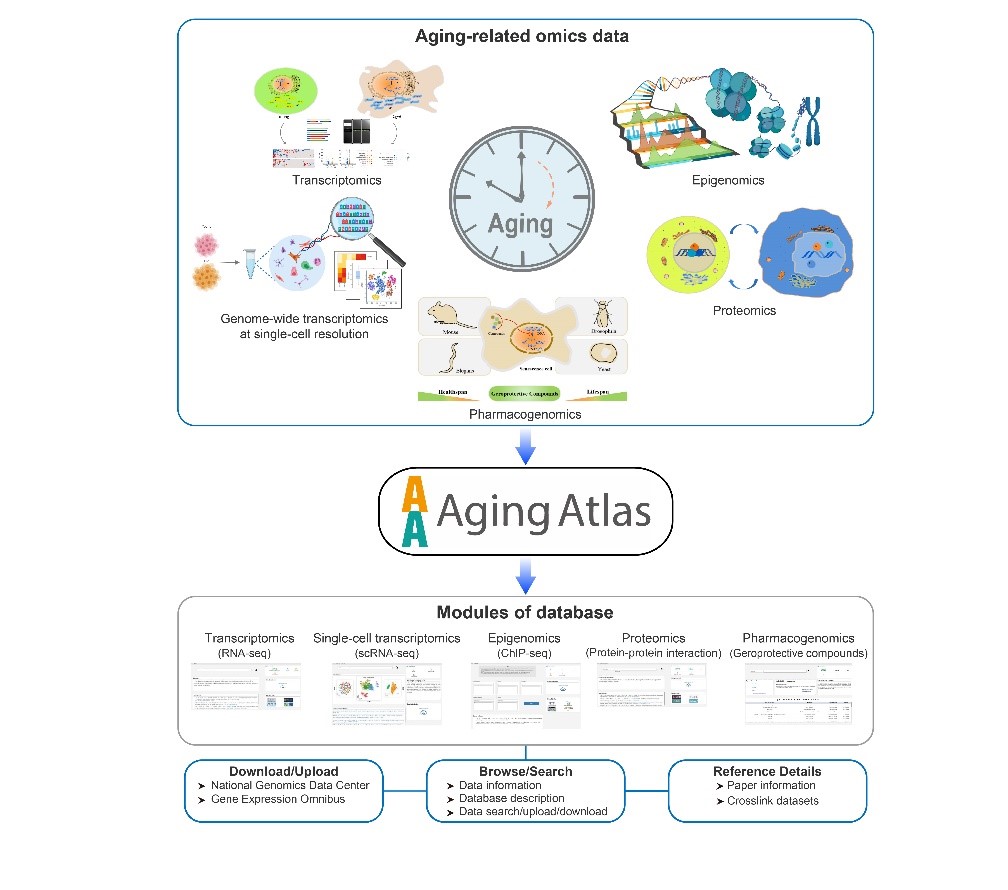ADMIN 2020年11月1日
As the aging population grows progressively around the globe, the need to research and develop strategies to healthy aging is ever more critical and takes on new urgency.
Organismal aging is driven by interconnected molecular changes encompassing internal and extracellular factors. Combinational analysis of high-throughput ‘multi-omics’ datasets (gathering information from genomics, epigenomics, transcriptomics, proteomics, metabolomics and pharmacogenomics), at either populational or single-cell levels, can provide a multi-dimensional, integrated profile of the heterogeneous aging process with unprecedented throughput and detail, and in turn, facilitate the development of new interventions for aging.
With a continually growing volume of valuable aging-related data, it is necessary to establish an integrative and shareable open database to support a wide spectrum of aging-related researches.
Recently, scientists from the Beijing Institute of Genomics of Chinese Academy of Sciences /China National Center for Bioinformation, and Institute of Zoology of the Chinese Academy of Sciences have worked jointly and constructed the Aging Atlas databases.
Aging Atlas aims to provide researchers with valuable resources that allow access to large-scale gene expression and regulation datasets created by various high-throughput omics technologies.
The current implementation includes five modules: transcriptomics (RNA-seq), single-cell transcriptomics (scRNA-seq), epigenomics (ChIP-seq), proteomics (protein-protein interaction), and pharmacogenomics (geroprotective compounds).
Furthermore, Aging Atlas provides user-friendly functionalities to explore age-related changes in gene expression, as well as raw data download services.
In addition, Aging Atlas provides sets of age-related genes belonging to different pathways, which may pave the way for a comprehensive understanding of the functions and underlying mechanisms of specific genes during aging.
This database was published with the title of "Aging Atlas: a multi-omics database for aging biology" in the journal Nucleic Acids Research on October 29.
In addition, users are encouraged to share data through the "upload" functionality. With the combined efforts of our users and our team, the database can be updated continuously to add high-quality omics data from aging research, and is open and freely available to the public.
Thus, Aging Atlas provides access to large gene expression and regulation datasets created by a variety of high-throughput omics technologies would be a valuable resource for a wide range of life science researchers.
